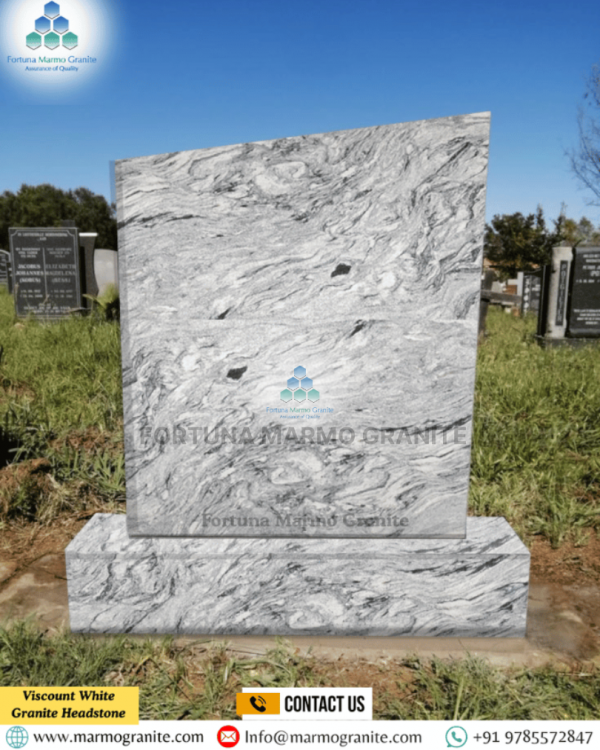How to Clean a Granite Headstone Safely: Expert Tips for Proper Care
A headstone stands as a lasting tribute, a tangible connection to those we hold dear and a way for future generations to remember their stories. For many, a granite headstone is chosen for its enduring beauty, remarkable strength, and resistance to the elements — qualities that enable it to remain a symbol of love, loyalty, and remembrance for decades or even centuries. However, even the tough nature of granite cannot completely fend off the effects of time, exposure, and the growing presence of dirt, grime, lichen, moss, and other organic deposits that slowly diminish its stately appearance.
These deposits can make inscriptions less legible, mask intricate details, and undermine the overall dignity of the monument. While the heartfelt intent to care for and honor a resting place is completely natural, it's crucial to approach the cleaning process with knowledge, care, and the proper techniques to avoid causing harm. Harsh chemicals, abrasive brushes, or aggressive methods can compromise the surface, causing permanent etching, staining, or other damage to the stone.
Why Granite? Understanding Your Memorial Stone
Before we delve into cleaning, it's helpful to understand why granite is such a popular choice for headstones. Granite is an igneous rock, formed from the slow crystallization of magma below the Earth's surface. Its primary minerals – quartz, feldspar, and mica – give it its characteristic hardness, durability, and often speckled appearance.
Unlike porous stones like marble or sandstone, granite is highly dense and non-porous, making it more resistant to staining and weathering. However, its polished surface can still be affected by environmental factors. Over time, airborne pollutants, tree sap, bird droppings, and biological growths like lichen and moss can adhere to the surface, obscuring the lettering and dulling the stone's natural luster. Understanding granite's properties is key to choosing the right cleaning methods.
The Step-by-Step Guide to Safely Cleaning a Granite Headstone
Step 1: Initial Rinse and Assessment
- Thorough Rinse: Moreover, Begin by liberally dousing the entire headstone with clean water. Use a gentle stream from a hose if available, or pour water slowly from a bucket. This helps to loosen superficial dirt, pollen, and debris.
- Assess the Damage: In addition, Once wet, take a moment to closely examine the stone. Identify areas with heavy biological growth (moss, lichen), stubborn stains, or general grime. This assessment will help you determine the level of cleaning required.
Step 2: Gentle Removal of Loose Debris
- Soft Brushing: Yet, Using your soft-bristle brush, gently brush away any loose dirt, leaves, and surface debris that the initial rinse didn't remove. Work from the top of the headstone downwards.
- Plastic Scraper (Use with Extreme Caution): Consequently, If there are thick, matted areas of moss or lichen, you can very gently use a plastic or wooden scraper to lift them. Hold the scraper almost flat against the stone and apply minimal pressure. The goal is to lift, not to scrape the stone itself.
Step 3: Applying the Non-Ionic Stone Cleaner
- Dilute as Directed: Subsequently, If your chosen stone cleaner requires dilution, follow the manufacturer's instructions precisely.
- Apply Generously: In addition, Apply the cleaner to a section of the headstone, ensuring it's thoroughly wet. Work in manageable sections to prevent the cleaner from drying out.
- Allow Dwell Time: In fact, Let the cleaner sit on the surface for the recommended dwell time, typically 5-15 minutes. This allows the solution to penetrate and loosen the grime. Do not let it dry on the stone. If it starts to dry, reapply water or more cleaner.
Step 4: Gentle Scrubbing
- Work Methodically: Using your soft-bristle brush, gently scrub the areas where the cleaner has been applied. Work in small, circular motions, paying attention to engraved areas and any stubborn spots.
- Focus on Biological Growth: For lichen and moss, the cleaner will help loosen their grip. You might need to gently scrub a bit more in these areas. Avoid excessive force. The cleaner is doing most of the work.
- Rinse Brushes Frequently: Rinse your brush in clean water often to prevent re-depositing dirt onto the stone.
Step 5: Thorough Rinsing – The Most Important Step!
- Rinse, Rinse, Rinse! Moreover, This cannot be overemphasized. After scrubbing, thoroughly rinse the entire headstone with clean water. Start from the top and work your way down, ensuring all traces of the cleaner are washed away. Any residue left behind can attract dirt or even etch the stone over time.
- Check for Residue: In addition, Run your hand over the stone. If it feels slippery or soapy, continue rinsing. You want the stone to feel clean and natural.
Step 6: Addressing Stubborn Stains (If Necessary, and with Caution)
Yet, For very stubborn stains that persist after the initial cleaning, consider these options, but always with extreme caution and after consulting with cemetery management:
- Repeat Cleaning: Moreover, Sometimes, a second application of the non-ionic cleaner and another round of scrubbing and rinsing is all that's needed.
- Specialized Poultices (Professional Use Recommended): In addition, For oil stains, rust stains, or deep biological discoloration, a specialized stone poultice might be required. These are absorbent pastes that draw stains out of the stone. However, these are best left to professional monument conservators. Improper use can cause more harm than good.
What NOT to Do When Cleaning a Granite Headstone
To reiterate, here's a critical list of things to avoid:
- No use household cleaners: Bleach, ammonia, dish soap, all-purpose cleaners, toilet bowl cleaners, oven cleaners – these are all highly damaging.
- Nouse abrasive tools: Moreover, Wire brushes, steel wool, sandpaper, or harsh scrubbers will scratch and permanently damage the granite's polished surface.
- NEVER use strong acids or alkalis: Even "natural" options like vinegar or lemon juice can cause etching and dulling.
- NEVER apply sealants or waxes unless professionally advised: Granite typically does not need sealing, and improper sealants can trap moisture or discolour the stone.
Long-Term Care and Prevention
- Regular Inspections: Periodically visit the headstone to check its condition. Early detection of growth or grime makes cleaning easier.
- Clear Debris: Gently remove leaves, twigs, and other organic debris that can trap moisture and encourage biological growth.
- Consider Professional Cleaning: For very old, delicate, or heavily soiled headstones, or for stains you can't remove safely, consider hiring a professional monument conservator. They have the expertise and specialized tools to restore the stone without damage.
Conclusion
Indian Granite Headstones Manufacturer & Supplier Maintaining the dignity, purity, and timeless appearance of a granite headstone is a profoundly meaningful way to celebrate and honor the life of someone you care about. Yet, How to Clean a Granite Headstone Safely, Proper care and gentle cleaning can make a significant difference in preserving its natural luster, color, and texture, ensuring that the memorial stands strong against the effects of time, the elements, and daily exposure to dirt, debris, and environmental factors.
Moreover, At Fortuna Marmo Granite, we appreciate the immense sentiment and reverence that a gravestone holds for families, and we are here to provide expert guidance, high-caliber materials, and a deep understanding of stone care. How to Clean a Granite Headstone Safely, In addition, Our team is passionate about delivering the highest standard of service, How to Clean a Granite Headstone Safely, Consequently, ensuring that your granite headstone stands as a beautiful, spotless, and respectful marker for years into the future — reflecting the love, stories, and memories that will forever reside within its surface.



